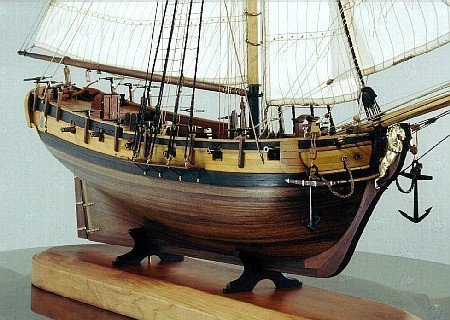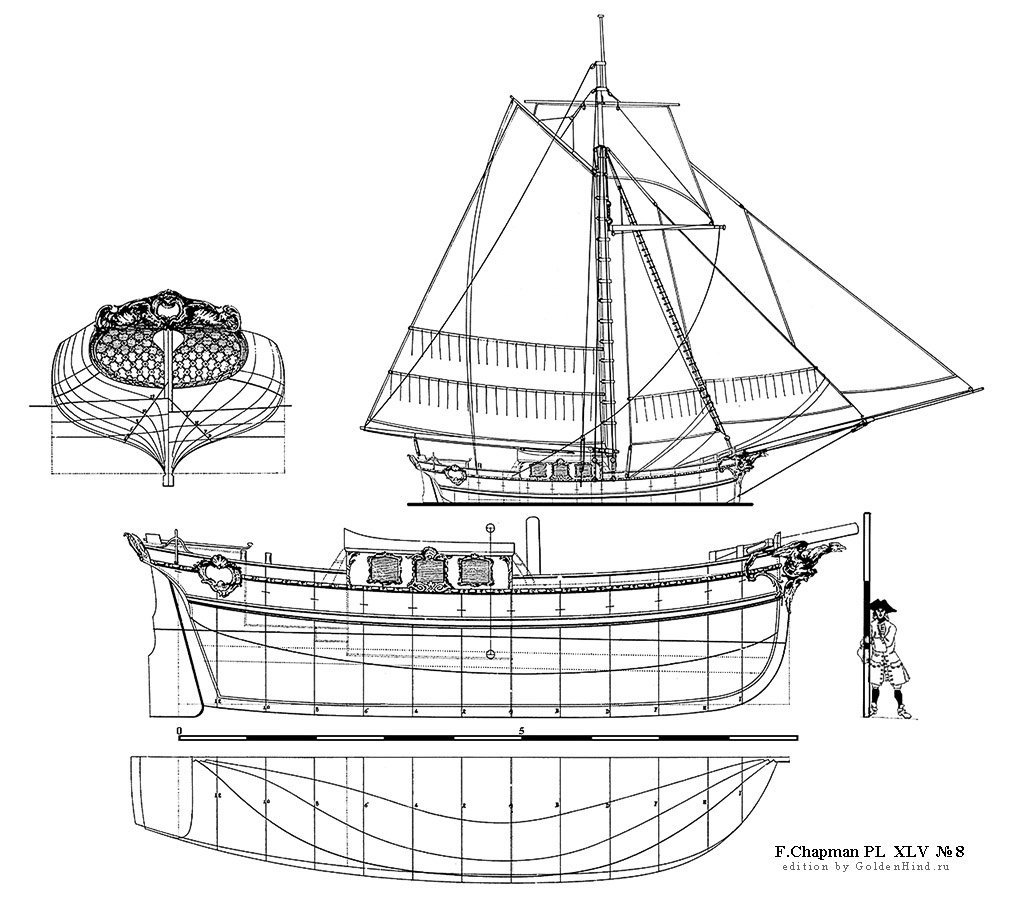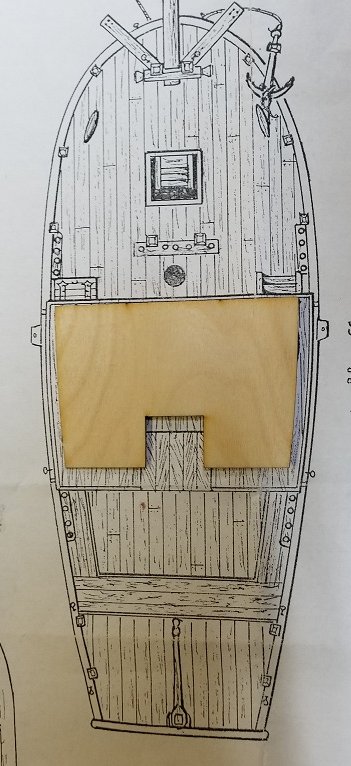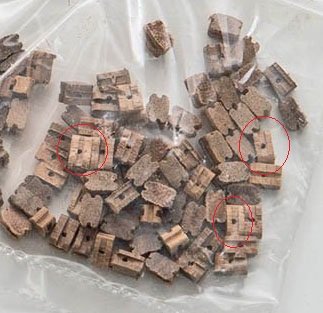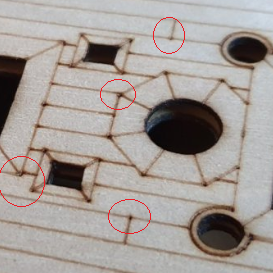-
Posts
3,144 -
Joined
-
Last visited
Content Type
Profiles
Forums
Gallery
Events
Everything posted by Gregory
-
The interpretation appears to be logical in some respects, like the braces and vang. The topmast doesn't look right. But there are others who know far more than me.
-
Here are the Chapman Drawings The description is Pleasure boat or Yacht. No mention of Dutch, so that was my mistake.
-
The plans are based on a Chapman drawing of a dutch pleasure yacht.. I'll post a picture later.. Something to be aware of in that new Dusek version of the kit. The base for the cabin roof is too small. You will need to make a new one based on the plans..
-
You seem to be familiar with spilling.. You might try this: Take a piece of masking tape and lay it lengthwise on a plank that is on the ship, preferably one that butts up against the stem. Trace the outline of the plank onto the tape. Lay the tape out flat, and you should see how the plank is bent.
- 725 replies
-
- vanguard models
- speedy
-
(and 1 more)
Tagged with:
-
They are having a sale right now. Great discounts on some kits, and free domestic shipping for a $75 order.. $49 flat rate for international orders.. I have to resist.. Too many kits on the shelf..
-
Making extremely tiny fittings
Gregory replied to BETAQDAVE's topic in Metal Work, Soldering and Metal Fittings
My thought would be to make one piece, then cut and shape after it is in place. More friendly than using two small pieces. -
How to rig spider lines on Spanish ship Sn Felipe
Gregory replied to dnevin's topic in Masting, rigging and sails
Are you trying to set it up, on or off the ship? You might find it easier to set it up off the ship in a jig of some sort, then stiffen it a little with diluted white glue before setting up on the ship.. -
I tried one of those rock tumblers on the typical kit blocks, and it took over a week of tumbling just to knock the edges off. Still had to do some work to define the sheaves, and of course it was no help at all when the sheave holes were near the center like you find on so many of them. Syren came along, and i never looked back,,
-
What size is that ships wheel? Might be a good excuse to get one of Chuck's Ships Wheel kits.
- 275 replies
-
- phoenix
- master korabel
-
(and 1 more)
Tagged with:
-
Drilling holes with crisp edges in wood
Gregory replied to laps's topic in Modeling tools and Workshop Equipment
At the risk of sounding negative, how often do you really need a "crisp" hole that is not going to be covered by some type of framing, such as mast partners or other framing. At the least, any round hole would probably need some kind of beveling -
FWIW the Mamoli Valient is totally fictitious.. It shares the same lines as two other Mamoli kits: Portsmouth and Blue Shadow, also fictitious apparently. Mamoli Has re-boxed a lot of kits ( in the past before Dusek took over the line ), changing details and giving them different names. For instance, their Surprise is a re-boxed La Glorie. I built the Blue Shadow a while back, and it made a pretty nice mantle piece until the cat sent it to Davey Jones locker..
-
Twisting blade on MicroMark saw?
Gregory replied to Rcboater Bill's topic in Modeling tools and Workshop Equipment
Here is a carbide tipped blade I have used with good success.. MTP 3 3/8 10mm arbor I don't think the Micromark blades are any better, and they cost 7 x as much.. -
Twisting blade on MicroMark saw?
Gregory replied to Rcboater Bill's topic in Modeling tools and Workshop Equipment
Do you have a model number or a picture of the saw. I have an old Microlux that looks a lot like the current Micromark saw. I can turn you on to some excellent blades I have found for ripping plywood. The kerf is pretty big, so they are not very desirable for fine woods.. Too much waste. -
That deck looks a lot better than some I have seen.. What was the source?
- 436 replies
-
- vanguard models
- alert
-
(and 1 more)
Tagged with:
-
Using pins
Gregory replied to Oddball's topic in Building, Framing, Planking and plating a ships hull and deck
Did he provide any illustrations of his method of " pinning " ? Was his purpose visual or for strength, or both ? -
Does anybody have some experience with CAF Models ?
Gregory replied to yvesvidal's topic in Wood ship model kits
You might try a PM here on the site, and let him know about the email problem.. https://modelshipworld.com/messenger/compose/?to=33401
About us
Modelshipworld - Advancing Ship Modeling through Research
SSL Secured
Your security is important for us so this Website is SSL-Secured
NRG Mailing Address
Nautical Research Guild
237 South Lincoln Street
Westmont IL, 60559-1917
Model Ship World ® and the MSW logo are Registered Trademarks, and belong to the Nautical Research Guild (United States Patent and Trademark Office: No. 6,929,264 & No. 6,929,274, registered Dec. 20, 2022)
Helpful Links
About the NRG
If you enjoy building ship models that are historically accurate as well as beautiful, then The Nautical Research Guild (NRG) is just right for you.
The Guild is a non-profit educational organization whose mission is to “Advance Ship Modeling Through Research”. We provide support to our members in their efforts to raise the quality of their model ships.
The Nautical Research Guild has published our world-renowned quarterly magazine, The Nautical Research Journal, since 1955. The pages of the Journal are full of articles by accomplished ship modelers who show you how they create those exquisite details on their models, and by maritime historians who show you the correct details to build. The Journal is available in both print and digital editions. Go to the NRG web site (www.thenrg.org) to download a complimentary digital copy of the Journal. The NRG also publishes plan sets, books and compilations of back issues of the Journal and the former Ships in Scale and Model Ship Builder magazines.

